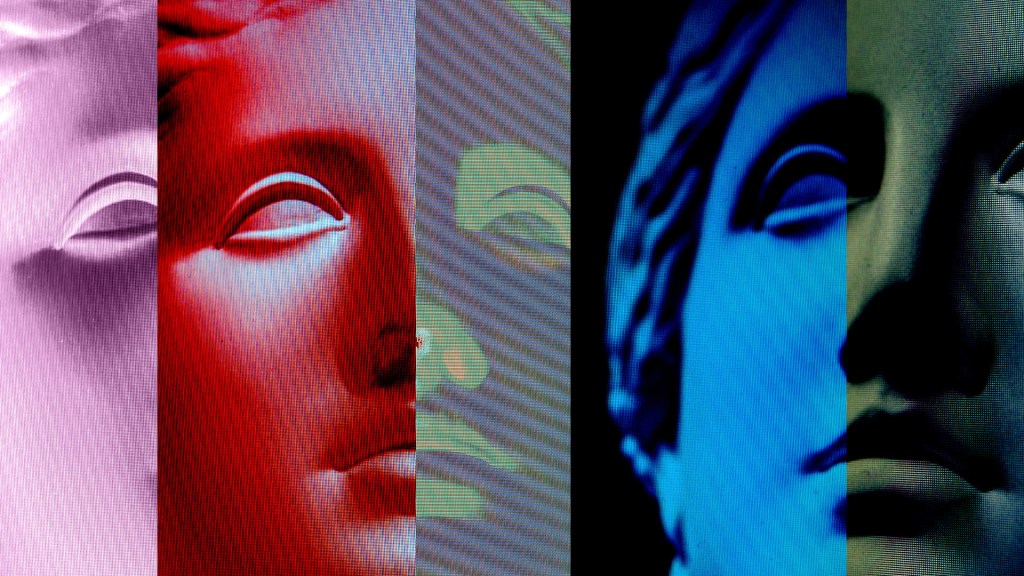
Jared Russell initiates a new coven member. Photo courtesy Jared Russell
A version of this article originally appeared on VICE Canada.
Over the course of the 20th century, the popular idea of the witch underwent a transformation. Gone is the baby-eating, Satan-worshipping hag of medieval Europe, and in its place has emerged the idea of female healers.
Videos by VICE
Second-wave feminists seeking a strong female subject latched onto the witch as the embodiment of feminine power. Witchcraft entered the feminist consciousness spiritually, though traditions like Wicca, and politically, as groups like WITCH—the Women’s International Terrorist Conspiracy from Hell—publicly hexed everything from beauty pageants to fees for public transit. Yet while the revival empowered some, it excluded others, and many of the groups that emerged were reserved for women.
But the idea of the witch has come a long way since then. Witchcraft is seeing a resurgence among queer-identified young people seeking a powerful identity that celebrates the freedom to choose who you are.
Related: Inside the Gaudy World of Romania’s Wealthiest Witches
Soft-spoken and covered in tattoos, Colby Gaudet doesn’t exactly fit the stereotypical image of the witch. But Gaudet’s been known to launch into a ritual when the moment is right. And identifying as a witch appeals to Gaudet’s self-professed “strange exhibitionist quality” by playing with people’s preconceived notions of tattoos, of Gaudet’s non-binary gender identity, and of how a witch should look.
Gaudet first discovered witchcraft as a teenage boy growing up in rural Nova Scotia in the 1990s. The message of self-acceptance and personal freedom Gaudet encountered in books from the 70s and 80s allowed them to explore a queer identity in a space free from shame and guilt.
“Those were my first steps into embracing my own sexuality and the first glimpses of exploring my gender,” Gaudet told VICE via Skype from Vancouver, British Columbia.
But it wasn’t a perfect match; the witchcraft tradition Gaudet had discovered was founded on a male-female binary, which didn’t fit with Gaudet’s developing sense of gender identity.
“I felt myself in that philosophy, but I didn’t see myself in it.”
As they entered their mid 20s and began identifying as non-binary, Gaudet rediscovered witchcraft through queer witches who directed Gaudet to more subversive practices. The timing was hardly coincidental; Gaudet says the capacity for witchcraft to accommodate alternative expressions of gender is what makes it appealing to a new generation of witches.
Jared Russell is part of that new generation. Russell was raised Mormon in the small Nova Scotian town of Pictou. Growing up, he wore skirts, makeup, and nail polish because they made him feel most comfortable in his own skin. Sometimes it was hard, he says—he was bullied.
But connecting this to his identity as a witch has given Russell the license to stand out. Dressing as a witch helps him find strength in the spiritual side of witchcraft—which he says includes spells, celebrating eight annual equinoxes, and devising his own witchcraft tradition—and in challenging dominant expectations of gender.
“It allows myself to express myself without this constant ego filter,” he says. “When I picture myself [as a witch], without judgment, everything just fits.”
But witchcraft isn’t just about identity; it’s also pretty practical.

Goat femme fatale: Dakota Hendrix. Photo courtesy Dakota Hendrix
Dakota Hendrix, a non-binary trans witch based in New York—an identity Hendrix jokingly refers to as “goat femme,” describing their combination of body hair, a smoky eye, and talons for nails—says the practice of witchcraft is a way to take control in a world that can be both metaphysically and mortally threatening.
It’s a supernatural form of self-defense that Hendrix says includes amulets that fight off mis-gendering, rituals that provide protection when walking down the street, and paying honor to queer and trans ancestors who don’t have descendants of their own paying homage. Not to mention—since, Hendrix says, contemporary witchcraft is connected to social justice work—a hex or two on the NYPD for good measure.
But while the rituals are plentiful, the rules are not, and Hendrix says being a witch is all about choosing one’s own path: “Being a witch is being autonomous; that’s the whole point. That’s how we draw power. We are defying the patriarchy, we are defying the submissive norm.”
“There is no one way to be a witch,” says Mey Rude. “It’s a really freeing identity.”

Dakota Hendrix
Rude is a Latina witch who was raised Catholic in Idaho, and though she moved away from the church and into witchcraft after she came out as transgender, her practice is informed by her religious roots. This means a lot of candles, shrines dedicated to Our Lady of Guadalupe (“She’s a very queer goddess,” Rude says), and traditional Mexican herbal remedies.
Rude says that playing with gender by wearing aggressively dark makeup is also part of her witch identity. While individual ornamentation may seem superficial, it’s as important a ritual as anything else.
Identifying as a witch makes her strong, she explains. It’s intimidating to be a trans woman of color in public, and the tools and rituals of witchcraft make her feel like she’s just as formidable as the culture that would threaten her.
In Medieval Europe, the idea of the witch was used as a weapon against marginalized people, and the person most likely to be accused of witchcraft was the old crone at the edge of the village.
But those roles have been reversed, and what was once used as a weapon against marginalized people is now working to defend them. Witches might still be on the edge, but they’re claiming that place for themselves, and drawing power from an identity that celebrates defiance while embracing difference. After all, what is being a witch if not owning the right to be yourself?
Follow Moira Donovan on Twitter.



